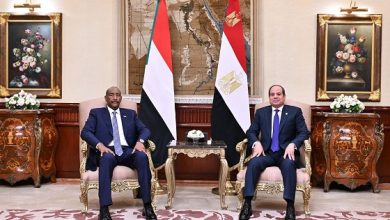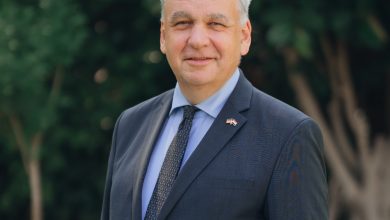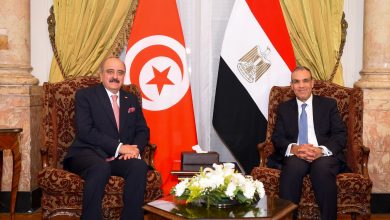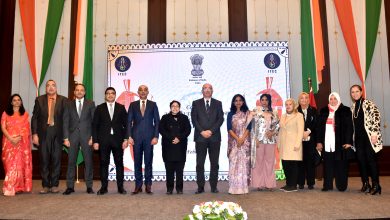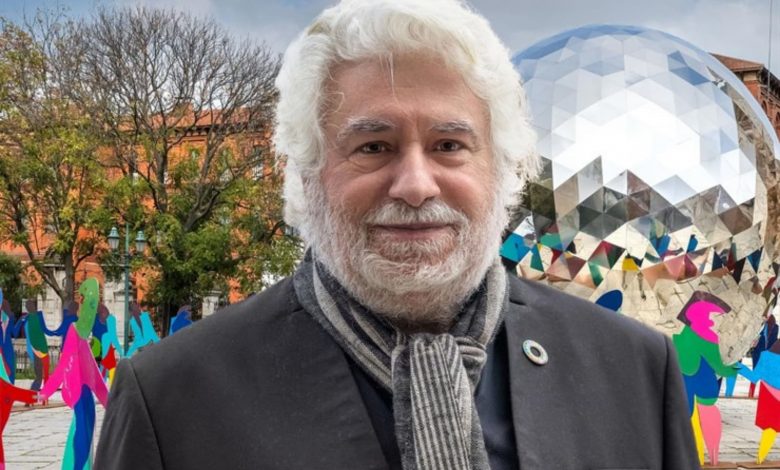
“A Life for a Dream”…a new wall artwork by the Spanish artist “Jabaron” inside the site of the Spanish archaeological mission operating in the Bahnasa area in Minya Governorate “Oxyrhynchus”
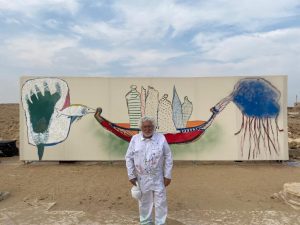
The Spanish artist concluded the sixth session of his artistic creative project for the scope of “Ámbito” within the site of the Spanish archaeological mission operating in the Bahnasa area in Minya Governorate “Oxyrynchos”
On this day, the Spanish artist Cristóbal Gabarrón (born in 1945 in the Spanish town of Mola in the Murcia region) painted a work of art live for three hours and forty-five minutes, as a kind of salutation and tribute to the fields of archaeology and anthropology as two disciplines that are indispensable in Defending and protecting the historical-artistic heritage. Through his artistic creation during those hours, the artist presented us with his art project Nitaq, which combines artistic creations around biodiversity as well as heritage values.
His artistic project sheds light on the identity and cultural values of a particular spot in this world, and on this occasion is the upper cemetery in the Athar Al-Bahansa area, which is located 190 km south of Cairo.
This pictorial artwork began with a presentation made by the co-directors of the Spanish archaeological mission operating in the Bahnasa area in Minya Governorate, Oxyrynchos, and they are Dr. Esther Pons, curator and director of the Egyptian and Near Eastern Antiquities Department at the National Archaeological Museum in Madrid, and Dr. Maite Maskurt, a researcher at the Institute for Ancient Near Eastern Studies at the University of Barcelona, among the highlights of the submission: “It has been a period of 30 years since the University of Barcelona began excavations and scientific research in this archaeological site, which is one of the largest archaeological sites in Egypt. , as it includes an archaeological group belonging to an extended time range: from the Savior era until the Byzantine Christian era, including the Persian and Greco-Roman eras, that is, from 664 BC until the seventh century AD.
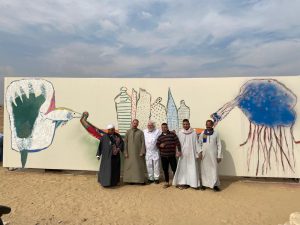
After that, Dr. Hassan Amer, a professor at Cairo University and the supervisor of this course, invited the orchestra to play the Egyptian national anthem, in the presence of a number of representatives of the higher cultural authorities in the Minya region, such as Mr. Gamal Al-Faqeer, General Director of Antiquities in the Maghagha region, and Mr. Salama Zahran, Director of the Department of Islamic Antiquities in the Bahnasa Antiquities District, as well as several antiquities inspectors and police representatives.
After that, the members of the orchestra, who belong to the regions and villages of Al-Bahnasa, Sandfa and Manshaat Al-Yousifi (the thinker and singer Sheikh / Ragab Al-Bahnasawy, Ahmed Muhammad (violin), Ahmed Saif (flute), Ramadan Hassan (tambourine), Ahmed Rashidi (drum)) played pieces Various local music emanating from this region of the Nile with improvised contemporary melodies spark an internal dialogue between the Spanish artist Gabaron and the archaeological site itself.
Dr. Francisco Sanchez Medrano (an expert in saving heritage and sustainability and dean of the Faculty of Architecture at the Catholic University of San Antonio, Murcia, Spain) began his speech by reflecting on the ability to respond to the surrounding challenges, understanding and explaining the double dimension between nature and heritage, and he spoke in that context, taking advantage of The opportunity to hold the COP27 Climate Summit under the auspices of the United Nations in Sharm El-Sheikh, Egypt.
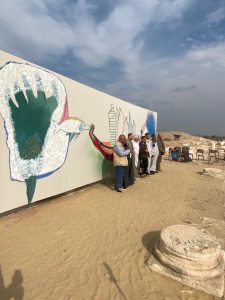
The illustrator and critic of Al-Ahram newspaper, Mrs. Amani Zahran, who traveled from Cairo specifically to attend this event, said: “I am impressed by this wonderful original artwork that seeks to merge different artistic disciplines, promoted by the distinguished Spanish artist Cristobal Gabaron, who praises the importance of our culture and highlights Light on the important work that foreign archaeological missions are doing in our country.
In addition, the audience was attended by Mr. Candido Criss, Cultural Counselor of the Embassy of Spain in Cairo, as well as a number of researchers working in the Spanish Archaeological Mission: Ms. Bibiana Agosti, an expert in anthropology and archaeology, and Mr. Bernat Berjaya, a specialist in archeology. Archaeologists, Mrs. Pilar Bayalta, an expert and archaeologist, Mr. Ibrahim Amer, an archaeologist, and Mr. Jose Javier Martinez García, archaeologist at the University of Murcia specializing in the fields of the early Christian era.
“A life for a dream”

The Spanish artist Cristóbal Gabarrón says, as he put it: “This work reflects my own vision of death as a vague transitional process. The ancient inhabitants of that civilization devoted their lives to it through the path of life, meaning that the ancient Egyptians were seeking to reach immortality and they were preparing for it all along.” This work of art is considered a consensual work that supports me in presenting the current culture as well as the archaeological, based on the discoveries of the Bahnasa antiquities area, on which I base some of my hypothetical ideas and some of the things that I interpret in my mind, we can say in a magical way. In a world, or we can say “space for the hand” on the left side, which is at the same time the beginning of this path represented by the fish “Oxyrhynchos” – and it is the same name given to the Spanish archaeological mission working in the area of the effects of Al-Bahnasa – with which we walk this path In order to reach the dream of immortality after death, the structure of the presented artwork is a letter H with vertical elements on both sides, and a horizontal element in the middle consisting of a boat sailing in the other world towards the “heaven” represented by a hill As the round mass on the right, all of this, in turn, is represented by a perfect and wonderful sky full of stars, like tomb No. 1 belonging to the Sawi era.
Up to this sixth edition of the “Nitaq” art project, this “tour around the world” is completed from an anthropological and cultural perspective, after the start of the journey in February in Spain, where the project was then held in several countries such as India, Germany and the United States. United States and Malta. In addition, Nitaq 2023 is planned to take place in more countries such as Nepal, Australia, Chile and Canada, among others. The idea is that this project will extend over a period of three years and be held in several geographical locations on five continents that are of special interest to the Spanish artist Gabaron.
